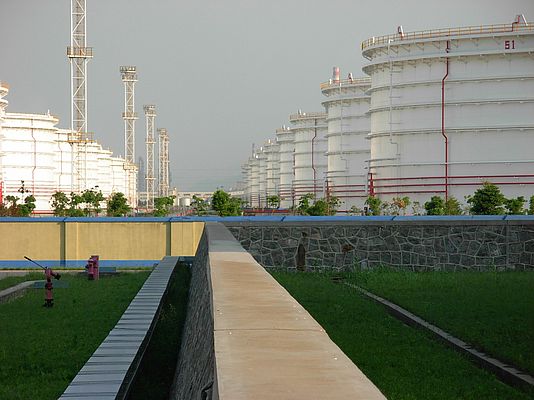Every critical infrastructure facility has a duty to protect the health and safety of workers and the public, as well as to protect the environment. Typically, there are strict processes and policies in place to ensure employees work in a safe way, use the right tools and equipment, and adhere to set procedures in case of an emergency, for example during a plant evacuation. But, beyond the main focus of keeping people and the environment safe and complying with legal requirements and industry standards, health, safety and environment (HSE) considerations are also increasingly evolving, with plant operators seeking, and gaining, a better understanding of the actual risks and effects of production processes within their plant, and how best to mitigate those risks.
While HSE processes are often still managed manually, for example, by ticking boxes on a checklist once certain procedures have been completed, some operators are now starting to turn to network video technology to help them automatically monitor process adherence, evaluate risks in real-time, and improve health and safety practices.
Network video cameras may already be in place to protect a plant against unauthorized access, sabotage and theft. The same technology can also be used to ensure the safety of the workers within the facility. For example, with the help of network cameras that are integrated with the access control system, operators can have an overview of how many workers are present in each area of the facility, at any given time. In case of an emergency, this information can be crucial to ensure the safe evacuation of every person within the plant and its surrounding area.
Integrated with access control and using advanced image processing techniques for license plate or facial recognition, the network cameras can identify, inspect and track vehicles, drivers and passengers from the moment they pass through the gates, and ensure that safety procedures are followed and no worker or visitor enters a zone that they are not authorized to or that is not safe to access.
Similarly, the same cameras can be used to make sure employees are working in a secure and clean environment and in a safe manner at all times. With add-on video analytics applications such as cross-line detection, the cameras can, for instance, automatically alert individuals if they are getting too close to a dangerous zone or to the machinery. Are employees wearing the right safety gear? Thermal network cameras can track whether safety helmets, high-visibility vests or safety glasses are worn, while at the same time protecting the employees' privacy as they don't record facial features. And finally, to detect dangerous and hazardous situations, network cameras can be used to check for any leakages, smoke, or gas flares, and raise automatic alarms so operators can act quickly and minimize any risk of injuries, or damage to the plant or the environment.
While safety procedures help minimize the number of incidents, emergencies do occur. In case of an incident such as a fire, a fast response is crucial. Intelligent network cameras installed throughout the facility enable operators to identify the type, scope and severity of the incident so that proper action can be taken. They can assist the safe and rapid evacuation of the plant by detecting smoke and how it develops, tracking the flow of evacuation through the building, and tracking and supporting the rescue team as they enter the facility. Advanced camera technologies that enhance image quality help provide a clear picture of the situation, even in situations where visibility is poor due to smoke, dust or darkness.
While it's easy to see how network cameras can aid an operator to safely run a plant in day-to-day operation, identify hazards and mitigate risks, and to deal with emergencies, long-term reviews and improvement of HSE practices are also an area worth considering.
The key to continuously evaluating risks, and improving equipment, processes and services for maximum safety is to know exactly how workers and visitors move inside a plant. Who is doing what, when and where? Network cameras let the operator not only follow a situation in real-time, but also collect statistical data over a period of time to gain a better understanding of what happens inside the facility day to day, helping the security and the safety manager to adjust and update safety and environment policies and procedures as and when needed, and serving as a training tool when instructing employees on safe practices.
Due to their superior image quality, connectivity, scalability, and scope for adding video analytics applications, network video cameras are increasingly replacing analog CCTV cameras to secure critical infrastructure facilities. With the added benefit of being able to support HSE processes, the transition to network video becomes an even more obvious choice.

















